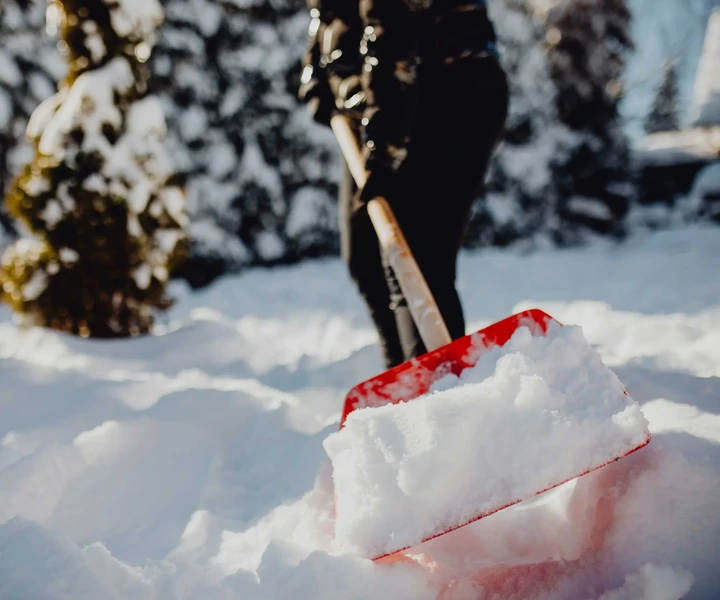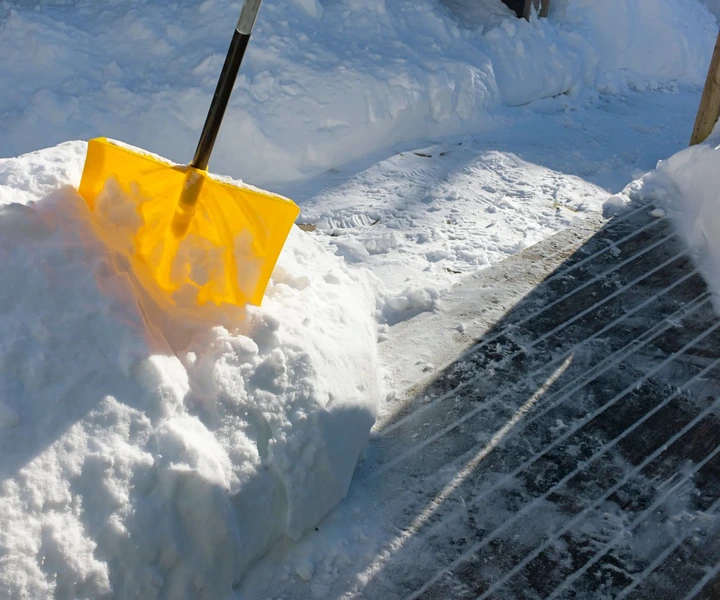Experts share their top tips for shoveling snow safely and efficiently, including an unexpected hack using cooking oil to help prevent injuries.
Clearing snow can be a tough task – landscaping experts share their top tips for efficient snow shoveling while minimizing the risk of injury.

View pictures in App save up to 80% data.
Snow accumulates, obstructing paths, entrances, and driveways, and during the heart of winter, it’s essential to remove it all to keep things accessible.
If you don't have a snow blower on hand, you need to get hands-on and shovel all the snow. However, this can put a lot of strain on your back. Shoveling snow is a common domestic cause of painful back injuries.
I consulted with landscaping experts regarding the most effective strategies for snow shoveling, and they shared numerous tips on how to do it quickly, effortlessly, and, most crucially, safely.
1. How to shovel snow safely and effectively

View pictures in App save up to 80% data.
Shoveling snow causes thousands of back injuries every year, so it's crucial to know how to do it safely. Thankfully, the right technique is easy. If you've ever had to do manual handling training, you probably already know the basics.
Outdoor expert Steven Mena says 'As someone who works outdoors, I know it can be hard to deal with snow. To keep things easy on your body, make sure to face the area you're working on and stand with your feet shoulder-width apart for better balance. Instead of bending at your waist, try squatting down by bending your knees and hips. Use your leg muscles to lift the snow. This way helps reduce the strain on your lower back. When you're throwing snow, try not to twist your torso. Instead, just turn your whole body in the direction you want to toss it.'
Snow expert Lorne Chadnick agrees and says 'In my experience, the safest and most efficient way to shovel snow involves thinking of it like working out - your stance matters. Make sure to bend your knees, keep your back straight, and lift with your legs - not your back. Additionally, try pushing the snow instead of lifting it when you can, as this also helps you avoid hurting yourself.'
You can also make snow shoveling much safer by wearing proper clothing. Yard expert Jeremy Yamaguchi says 'One of the most important safety steps for shoveling is preparing and protecting your body ahead of time. For example, put on boots with good traction so that you don’t slip, put on gloves so your hands don’t blister, and put on a brace if you have a bad back.'

View pictures in App save up to 80% data.
Steven Mena serves as the CEO of AAA Fence and Deck, a premier provider of top-notch fencing and decking solutions in Raleigh, NC. With three decades of experience, the company excels in the professional installation of various types of fences, including wood, vinyl, aluminum, chain-link, composite, and pool fences, catering to residential, commercial, and industrial clients.

View pictures in App save up to 80% data.
Lorne established IceTrek following a challenging winter in 2022, during which he had a mishap on an icy porch that worsened a previous injury. In response to this experience, he created IceTrek Rubber Snow Melting Mats to help people move safely over slippery surfaces.

View pictures in App save up to 80% data.
Jeremy is a gardening expert who advises on a range of gardening matters. As the CEO of Lawn Love, Jeremy helps homeowners find quality, reliable lawn care.
2. Tips for Efficient Snow Shoveling

View pictures in App save up to 80% data.
To maximize efficiency while shoveling snow, it's important to save time and minimize the chance of injury. Although it may seem illogical, regularly shoveling smaller amounts of snow tends to be the most effective approach.
Jeremy Yamaguchi advises, "Even during heavy snowfall, it's better to go outside and shovel every 2-3 inches that build up, instead of waiting for all the snow to fall and trying to tackle it in one go."
Removing lighter snow is simpler, so tackling it before it settles into dense, hard-packed snow saves you significant effort later on when the snowfall has ceased.
Certainly, this may not be feasible if it snows during the night. However, if you find yourself waking up to a thick blanket of snow, there are several choices available to you.
According to Steven Mena, when tackling thick or heavy snowfall, it's advisable to begin from the top and gradually move downwards. Handling dense layers can be challenging, so it's wise to divide them into smaller portions to prevent excessive strain.
Regardless of your approach, the most effective way to clear snow is to direct it towards the perimeter of your yard. This method allows snow to accumulate in drifts along the edges, preserving clear areas for driveways and walkways. Additionally, it ensures that you won't spend unnecessary time removing snow from the sides of the yard.
Steven advises, "When clearing your driveway, it's most effective to start from the center and work your way outwards towards the sides. This approach will help you conserve both time and effort."
3. Tips for Choosing the Perfect Snow Shovel

View pictures in App save up to 80% data.
Various types of snow packs and areas necessitate the use of different shovels. The three primary categories are ergonomic shovels, push shovels, and standard shovels.
Steven Mena states, "Choosing the appropriate shovel can significantly impact the efficiency and safety of your work. Ergonomic shovels are particularly beneficial as they are designed to reduce the strain on your back and joints."